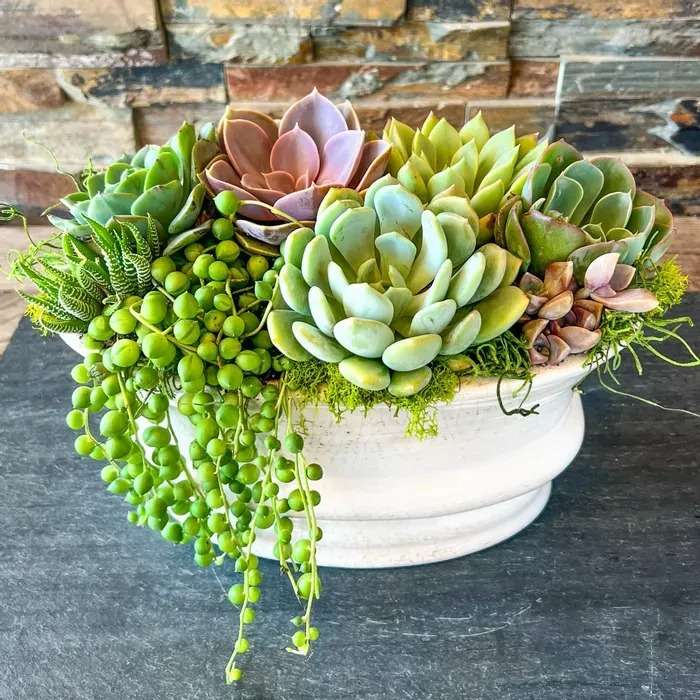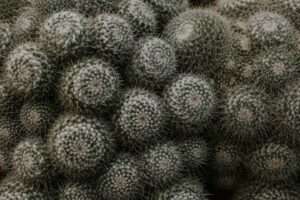Succulents are unique plants that have gained popularity in recent years due to their striking appearance and low maintenance requirements. These plants have adapted to survive in arid and semi-arid regions with limited water availability and nutrient-rich soil. One crucial factor that determines the health and growth of succulents is soil pH. Soil pH refers to the measure of acidity or alkalinity of the soil, and it plays a significant role in nutrient availability, water retention, and microbial activity in the soil.
The Basics of Soil pH and How it Affects Succulent Health
Soil pH is measured on a scale from 0 to 14, with 7 being neutral. Values below 7 indicate acidic soil, while values above 7 indicate alkaline soil. Succulents generally prefer a slightly acidic to neutral soil pH range of 6.0 to 7.0. This pH range provides an optimal environment for nutrient uptake and root development.
Soil pH affects succulent health in several ways. Firstly, it influences nutrient availability. Different nutrients are more readily available to plants at specific pH levels. For example, acidic soil can limit the availability of essential nutrients like calcium, magnesium, and phosphorus. This can lead to stunted growth, yellowing leaves, and other nutrient deficiencies in succulents.
Secondly, soil pH affects water retention in the soil. Acidic soils tend to have better drainage properties, which is beneficial for succulents that are prone to root rot if overwatered. On the other hand, alkaline soils have poor drainage and can lead to waterlogged conditions that suffocate the roots.
Lastly, soil pH influences microbial activity in the soil. Microorganisms play a vital role in breaking down organic matter and releasing nutrients for plant uptake. Acidic soils tend to have higher microbial activity compared to alkaline soils. This can benefit succulents by promoting nutrient cycling and overall soil health.
Understanding the Natural Habitat of Succulents and Their Soil Preferences
To understand the importance of soil pH for succulent growth, it is essential to consider their natural habitat and soil preferences. Succulents are native to arid and semi-arid regions, such as deserts and dry grasslands. These regions typically have well-draining, sandy soils with low organic matter content.
Succulents have evolved to survive in these harsh environments by storing water in their leaves, stems, or roots. They have adapted to low-nutrient and low-water conditions by developing specialized structures like thick fleshy leaves or a waxy cuticle that helps reduce water loss through evaporation.
When cultivating succulents, mimicking their natural habitat is crucial for their success. This includes providing well-draining soil that replicates the sandy texture found in their native environments. Additionally, maintaining a slightly acidic to neutral soil pH range helps create optimal conditions for nutrient uptake and root development.
How Acidic Soil Affects the Absorption of Nutrients in Succulents
Acidic soil can have a significant impact on the absorption of nutrients in succulents. While some nutrients are more readily available in acidic soils, others may become less accessible to plants.
One example is calcium, an essential nutrient for succulent growth. In acidic soils, calcium can become less available due to increased leaching. Leaching occurs when excess water washes away nutrients from the soil before plants can absorb them. This can lead to calcium deficiency in succulents, resulting in stunted growth and weak stems.
Similarly, magnesium availability can be affected by acidic soil conditions. Magnesium is crucial for chlorophyll production and overall plant health. In acidic soils, magnesium can become bound to other elements or leached out, making it less available to succulents. Magnesium deficiency can cause yellowing leaves and poor growth in succulents.
Phosphorus is another nutrient that can be affected by acidic soil. Acidic soils tend to have higher levels of iron and aluminum, which can bind with phosphorus and make it less available to plants. Phosphorus deficiency can lead to poor root development and reduced flowering in succulents.
The Role of Soil pH in Preventing Root Rot and Other Succulent Diseases
Soil pH plays a crucial role in preventing root rot and other fungal diseases in succulents. Root rot is a common problem that occurs when the roots of succulents are constantly exposed to excess moisture. This can happen if the soil does not have adequate drainage or if the plant is overwatered.
Maintaining a slightly acidic soil pH can help prevent root rot by promoting better drainage. Acidic soils tend to have better water infiltration rates and lower water-holding capacity compared to alkaline soils. This means that excess water is more likely to drain away quickly, reducing the risk of waterlogged conditions that can lead to root rot.
In addition to preventing root rot, soil pH also affects the growth and activity of soil microorganisms, including harmful pathogens. Some pathogens thrive in alkaline soils, while others prefer acidic conditions. By maintaining a slightly acidic soil pH, you can create an environment that is less favorable for pathogen growth and reduce the risk of succulent diseases.
The Benefits and Drawbacks of Acidic Soil for Succulent Growth
While acidic soil can be beneficial for certain succulent species, it may not be suitable for all types of succulents. Some succulent species, like cacti and certain Echeveria varieties, are well-adapted to acidic soil conditions and thrive in slightly acidic pH ranges.
Cacti, for example, are known for their ability to tolerate low-nutrient and low-water environments. They have specialized root systems that allow them to absorb water and nutrients efficiently from the soil. Acidic soil can provide the ideal conditions for cacti by promoting better drainage and nutrient availability.
Certain Echeveria varieties, such as Echeveria elegans and Echeveria pulvinata, also prefer slightly acidic soil conditions. These succulents have adapted to grow in rocky, well-draining soils in their native habitats. Acidic soil can help replicate these conditions and promote healthy growth.
However, it is important to note that not all succulent species thrive in acidic soil. Some succulents, like Haworthia and Aloe vera, prefer neutral to slightly alkaline soil pH ranges. These succulents have different nutrient requirements and may not tolerate acidic conditions well. It is essential to research the specific soil preferences of your succulent species before adjusting the pH of your soil.
Tips for Testing and Adjusting Soil pH for Succulent Care
Testing soil pH is a simple process that can be done with a soil pH meter or a test kit. These tools are readily available at garden centers or online. To test your soil pH, collect a sample from your succulent pot or garden bed and follow the instructions provided with the testing tool.
If you find that your soil pH is outside the preferred range for your succulents, you can adjust it using organic amendments. For acidic soils, adding lime can help raise the pH and make it more alkaline. Lime is available in different forms, such as dolomitic lime or agricultural lime. Follow the recommended application rates on the packaging to avoid over-application.
On the other hand, if you have alkaline soil and need to lower the pH, sulfur is a commonly used amendment. Sulfur reacts with water and soil microorganisms to produce sulfuric acid, which helps lower the pH. Again, follow the recommended application rates to avoid over-acidifying the soil.
It is important to note that adjusting soil pH is a gradual process and may take time to see results. It is best to make small adjustments and retest the soil periodically to monitor the changes in pH.
Common Mistakes to Avoid When Dealing with Acidic Soil and Succulents
When dealing with acidic soil and succulents, there are some common mistakes that should be avoided. One common mistake is over-fertilizing succulents. While succulents do require some nutrients for healthy growth, they are adapted to low-nutrient environments. Over-fertilizing can lead to nutrient imbalances and soil pH issues. It is best to use a balanced, slow-release fertilizer specifically formulated for succulents and follow the recommended application rates.
Another mistake to avoid is using tap water with a high pH for watering your succulents. Tap water can vary in pH depending on your location. If your tap water has a high pH, it can affect the soil pH over time. Consider using rainwater or distilled water for watering your succulents, as these sources tend to have a more neutral pH.
Examples of Succulent Species That Thrive in Acidic Soil
While not all succulent species prefer acidic soil, there are several examples of succulents that thrive in slightly acidic conditions. Cacti are one of the most well-known succulent groups that prefer acidic soil. They have adapted to grow in arid regions with sandy, well-draining soils that are naturally slightly acidic.
Haworthia is another succulent genus that prefers slightly acidic soil conditions. These small, rosette-forming succulents are native to South Africa and have adapted to grow in rocky, well-draining soils. They are known for their tolerance of low-light conditions and their ability to survive in nutrient-poor environments.
Certain Echeveria varieties, such as Echeveria elegans and Echeveria pulvinata, also thrive in slightly acidic soil. These succulents have adapted to grow in rocky, well-draining soils in their native habitats. They are prized for their colorful rosettes and are popular choices for succulent gardens and container plantings.
Conclusion: The Importance of Finding the Right Soil pH Balance for Your Succulent Collection
In conclusion, soil pH is a critical factor in the health and growth of succulents. Understanding the natural habitat and soil preferences of your succulent species is key to their success in cultivation. While some succulents prefer slightly acidic soil conditions, others may require neutral to slightly alkaline pH ranges.
Soil pH affects nutrient availability, water retention, and microbial activity in the soil. Acidic soil can limit the availability of essential nutrients, leading to stunted growth and nutrient deficiencies in succulents. It can also promote better drainage and help prevent root rot and other fungal diseases.
Testing and adjusting soil pH is a simple process that can be done with readily available tools and organic amendments. However, it is important to make gradual adjustments and monitor the changes in pH over time. Avoid common mistakes like over-fertilizing succulents or using tap water with a high pH.
By finding the right soil pH balance for your succulent collection, you can create optimal conditions for their growth and ensure their long-term health and vitality.
If you’re a succulent enthusiast, you know that the right soil is crucial for their health and growth. Did you know that some succulents thrive in acidic soil? If you want to learn more about this topic, check out this informative article on GirlsGist.com: “Succulents and Acidic Soil: A Complete Guide.” Discover which succulents prefer acidic soil and how to create the perfect environment for them. Click here to read the article:

















Add Comment